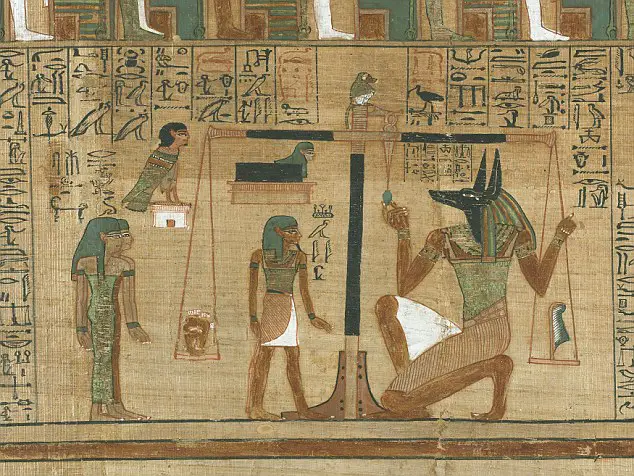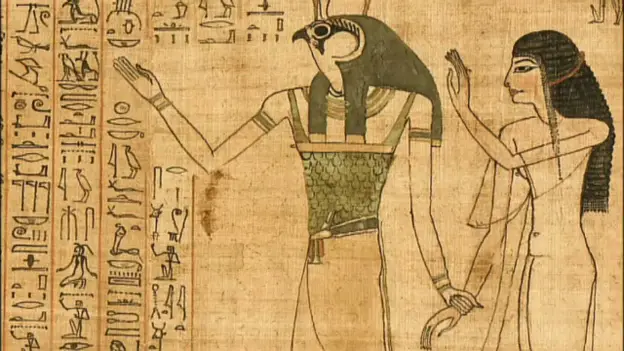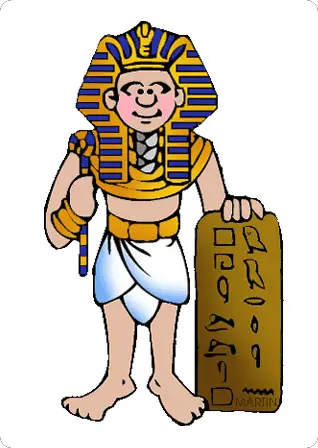Book of the Dead
The ancient Egyptian ‘Book of the Dead’ is part of the Egyptian religion.
It contains all of the information that is needed for the spirit of someone who has died to get through the trials and tests and emerge to their afterlife.
Hieroglyphs and passages have been found on the walls of many burial tombs.

Book of the Dead Facts
- The ancient Egyptians believe that this book held secrets to the afterlife
- There are 190 chapters in the book
- There are 165 different spells
- The spells were written on papyrus sheets or on tomb walls
- Some of the chapters explain how the gods could help you get into the afterlife
- It is believed that the book dates back to 1600 BC
- Karl Richard Lepsius first translated the book in 1842
- Samuel Birch of the British Museum published the first English translation in 1867
- In 1974 T. G. Allen updated the English version
- The book prepared Egyptians for the afterlife and was a big part of their religion
- Not everybody could afford to have a book of the dead as it was expensive to do
- Wealthy people could afford to hire a script to make a special book of the dead and add in different spells that they could use in the afterlife.
- Poorer individuals had to settle for prewritten versions

The name ‘Book of the Dead’ was actually given by European explorers and archeologists due to the fact that all of the passages were found in burial tombs.
The true ancient Egyptian name translates to “The Book of Coming Forth by Day”.
A Guide to the Afterlife in Ancient Egypt
Ancient Egyptians believed in magic and the book is actually a collection of magical speeches and prayers that would be used by the person that died.
It was designed to help and guide them so that they could pass the spiritual tests and enter the afterlife. The belief is that you would also join the gods and live in a place called the field of reeds.
Many of the chapters of the book are written on papyrus paper, but some are also found on coffins, scarabs, tomb walls, and even other funeral objects.
They include illustrations and pictures that sometimes show the individual person as they make their journey to their afterlife.
Pharaohs and wealthy families would have personal inscriptions, but the average middle-class family could not usually afford the cost.
Pyramid Texts
The book of the dead dates back to the Egyptian old kingdom and is basically a tradition of funerary manuscripts.
One of the first texts that you will find this out pyramid texts and these actually date back to 2400 BCE.
Coffin Texts
It was during the middle Kingdom era that a new text emerged called coffin texts. It was basically a new version of the language, it also had new spells and illustrations.
Texts were written on the inner surface of coffins and sometimes on tomb walls.
This language was mainly available to the wealthy who could afford coffin text and therefore help them in the afterlife.
Tracing the Evolution of the Book of the Dead in Ancient Egypt
The Egyptian civilization lasted 3,000 years and throughout that time there were different versions of the Book of The Dead.
The various spells that were created by the priests depended upon the importance of the gods and goddesses of the time. Around 1500 B.C.E., what is called the Eighteenth Dynasty, they created the version that we see today.
At that time, it was normal to include images of their gods.
It is believed that the Book of the Dead is a collection of stories from various traditions.
This is because some of the wording in the book is strangely opposite of other wording in the book.

Afterlife Test in Ancient Egypt’s Book of the Dead
One of the main parts of the Book of the Dead is showing the process that the person who has died must go through.
There is a test that must be passed in order to enter the afterlife. The spirit of the person who has passed away enters the Hall of Two Truths.
The Egyptian god, Anubis, would be waiting with a scale.
There was an ostrich feather on one side of the scale and the god would put the heart of the person that died on the other side.
If the feather weighed more than the heart it proved the person led a good life and was allowed to go to the afterlife.
Egyptian Gods in the Afterlife
There are other ancient Egyptian gods that appear in the Book of the Dead.
Each has its own purpose. One would play the part of a scribe and write all of the details down, while another was there to punish the soul of the person if they didn’t pass the test.
The Egyptian people believed that one of the most important things in life was happiness. Most of the ancient Egyptians seemed to be optimists and so they thought that everyone would pass the test.
Since the Egyptians lived in a culture where everyone had their own social status, they also believed that poor people would be poor in the afterlife and rich people would have the same rich status.
Mass-Produced Book of the Dead Copies in Ancient Egypt
Those that have studied some of the copies of the Book of the Dead have noticed that, for people other than the pharaohs, it appears that the artists and priests had a standard copy that they wrote on papyrus.
The only area that was blank was the name of the person that had passed away.
This would have made it a lot easier to include in a burial tomb because they could make up copies ahead of time and just fill in the name.
One of these copies is on exhibit at the British Museum.
It is for someone named Ani, who is “the Accounts-Scribe of the Divine Offerings of all the Gods,” and the tomb was also for his wife Tutu.
The British Museum first published the English translation in 1876 which was done by Samuel Birch, a few years later in 1876 he published a photograph a copy of the Papyrus of Nebseny.



